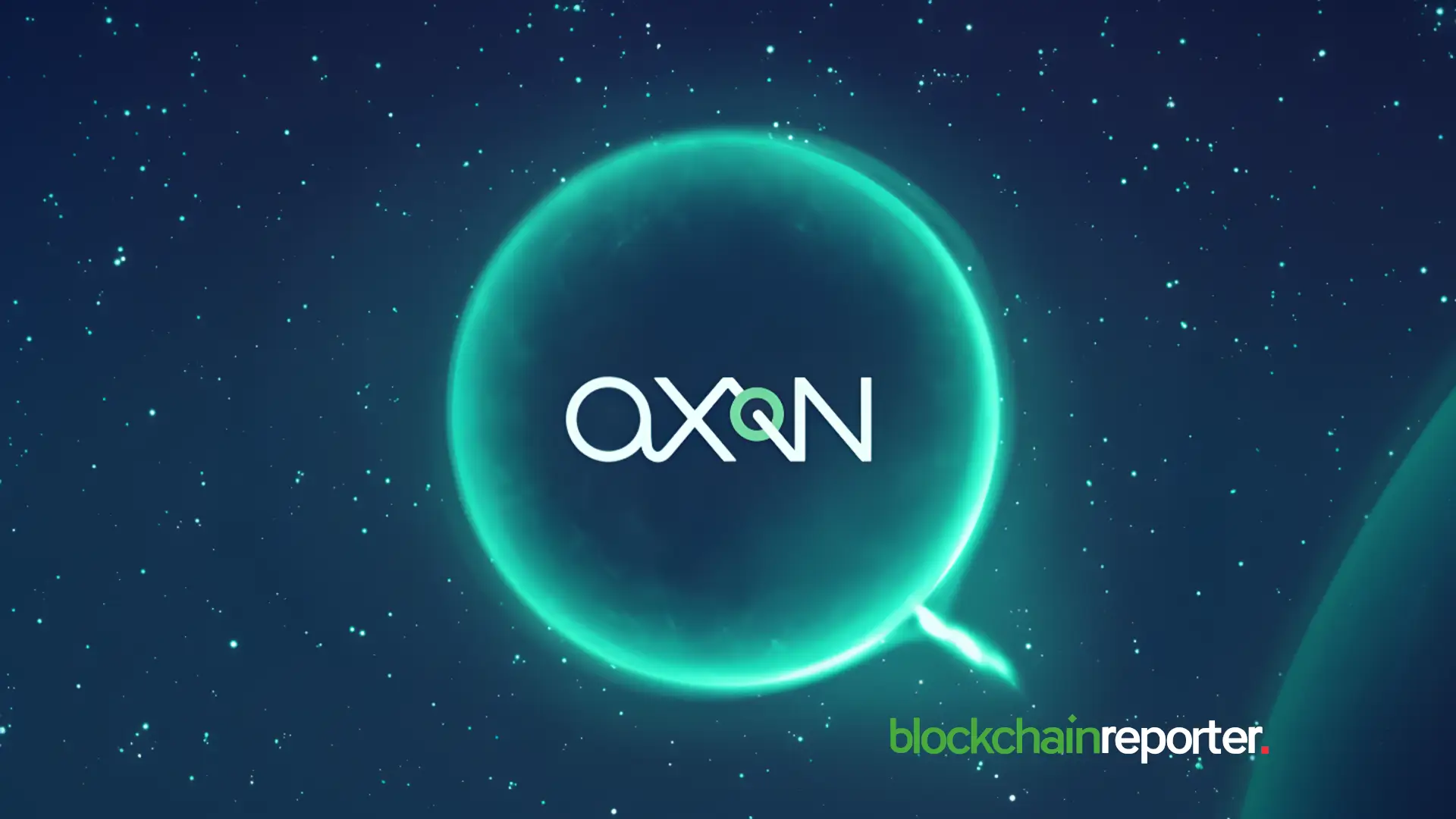Bridging Crypto and Fiat: An In-Depth Look at Axon’s Payment Stack



Axon bills itself with a crisp, confident claim: One ecosystem. Seamless payments. Trusted transfer. Powered by AXON token. It’s a compact promise of unifying crypto and fiat, cutting costs and friction, and adding a layer of verifiable trust using blockchain
The idea is straightforward and appealing: a combined payment gateway and on-chain transfer documentation layer that targets merchants, marketplaces, freelancers, SMEs in crypto, gaming and any party that needs low-cost, auditable transfers across borders. The devil, as always, is in the execution.
But what makes Axon feel different, and worth paying attention to, is how plainly practical the team is. This isn’t a pitch built on vague visions or distant promises; it reads like a product roadmap aimed at solving everyday pain points merchants and marketplaces actually face.
Below, I walk through what Axon says it does, why that matters, who it competes with, and the key questions that will decide whether it becomes a practical alternative or another interesting idea.
A Quick Tour of the Product

Axon’s platform is framed around two complementary services. Axon Pay is a payment gateway: plug it in to accept fiat and crypto settlements, let customers pay in more than a thousand supported tokens or choose familiar fiat rails, and have the system convert and settle into the merchant’s preferred currency.
Axon Transfer is a trust and provenance layer: every transaction, agreement or transfer can be documented on-chain so that the record is tamper-proof and usable as evidence in disputes or audits.
Layered over both is an economy built around the AXON token, used for fee payments, staking for higher-trust tiers, discounts, and rewards. Those are the broad strokes on the website and product pages. Two features stand out in Axon’s pitch.
First is the orchestration idea. The platform claims it will integrate multiple exchangers and liquidity providers and then dynamically choose the fastest or cheapest routing path to move value between source and destination. In principle, that approach can meaningfully reduce costs in complex corridors where single-rail solutions are either expensive or unavailable.
Second is the trust stack, combining identity verification (KYC/KYB), wallet-address investigations and a global reputation score, which attempts to turn payments into auditable, low-fraud flows, a major pain point in P2P and B2B crypto usage. Both features, if implemented reliably, are real differentiators.
Beyond the architecture, the user impact is straightforward: fewer intermediaries to negotiate with, less manual reconciliation work, and a single integration point for multiple payment rails. That reduces the mental and operational load for finance teams, and in payments, reducing friction is itself a direct line to better margins and fewer customer headaches.
Put simply, if Axon delivers on orchestration and settlement speed, merchants will stop thinking of crypto as a niche extra and start treating it as a real, competitive checkout option.
The Problems Axon is Targeting
Cross-border payments are still expensive and slow in many corridors. Traditional processors and banks often apply fixed cross-border fees, unfavorable exchange margins, and multi-day settlement windows.
Services like Wise have proven that much of this cost is avoidable by streamlining settlement and offering competitive exchange rates, which is why they’ve found broad adoption among SMBs and individuals.
Meanwhile, crypto gateways like Coinbase Commerce or Binance Pay provide immediate rails for digital assets but typically leave merchants to solve fiat settlement, compliance and reconciliation challenges themselves.
Axon’s value proposition is to sit between those worlds: offer the flexibility of crypto acceptance while keeping fiat settlement, compliance and accounting intact for businesses. For merchants operating in tight margins or in regions poorly served by global banks, that hybrid promise is compelling.
Axon also addresses a softer but equally important problem: trust. P2P transfers and B2B invoice settlements can become contentious when there’s no reliable paper trail. Recording terms and evidence on-chain does not magically resolve every dispute.
However, it does create immutable evidence that can change outcomes when disagreements arise. For marketplaces, freelance platforms and high-value B2B transfers, that provenance can reduce chargebacks and fraud-related losses, and that’s a tangible commercial benefit.
The upside here is not theoretical. Even modest improvements in settlement time and fee compression translate to meaningful bottom-line gains for high-volume sellers and platforms that operate across many countries.
For SMBs that run on thin margins, faster settlement can mean better cash management; for marketplaces, clearer on-chain records mean fewer disputes and lower operational costs. That combination, cost, speed and trust, is exactly the recipe that persuades procurement teams to switch vendors.
How Axon Stacks Up Against Incumbents
On the surface, Axon competes with a wide range of players: fiat incumbents like PayPal and Wise; crypto payment gateways; and newer payment orchestration platforms that focus on routing, reconciliation and real-time insights.
Each established category brings strengths. PayPal provides global reach and familiar rails for consumers and merchants, but it still levies cross-border fees and currency conversion costs that can be expensive in some markets.
Wise has built a reputation on transparency and low fees for transfers between bank accounts. Coinbase Commerce and similar crypto-native gateways give merchants immediate crypto acceptance with deep exchange liquidity.
Axon’s pitch is that it combines the orchestration and reconciliation strengths of enterprise payment platforms with the flexibility of crypto gateways, plus a built-in compliance and reputation layer that traditional crypto gateways often lack. Those are bold claims, and their weight depends entirely on the depth of Axon’s banking and exchange integrations.
Compared to both classic fiat providers and crypto-native gateways, Axon’s hybrid stance is a practical advantage, not just a marketing line. Incumbents can add crypto rails, sure, but they rarely couple that capability with an auditable transfer layer and the level of compliance tooling that enterprises demand.
If Axon nails the integration work, it won’t be competing only on price; it will be competing on ease of operations, risk reduction and the ability to offer new features (like BNPL powered by crypto) that incumbents aren’t optimized to provide.
The Token Question: Utility or Speculation?

Axon positions the AXON token as a functional part of the platform’s economics. It can be used to pay fees (possibly at a discount), required as a stake for certain enterprise onboarding to signal commitment and compliance, and used for rewards and future governance.
That model, making a token a workhorse rather than a pure speculative play, can create durable demand if the staking and fee discounts are genuinely useful and if platform throughput scales. Still, for any token to be meaningful, detailed tokenomics (supply caps, vesting schedules, inflation or burn mechanisms) must be transparent.
The token’s ability to create stickiness is only as good as the platform’s everyday utility. For instance, if businesses adopt Axon widely, demand follows; if not, the token remains an accessory.
One of the smarter elements of Axon’s design is how the token is framed as a functional utility rather than a speculative wrapper. Requiring staking for certain enterprise features, offering fee discounts, and using tokens to reward early ecosystem builders are all mechanisms that create real, platform-tied demand.
That doesn’t guarantee price appreciation, and it shouldn’t be spun as a promise, but it does mean token holders have practical reasons to engage with the platform beyond fandom: lower costs, priority service and a stake in the network’s health.
Engineering and Regulatory Hurdles
There are concrete areas where Axon will face friction. First, the multi-exchange routing engine requires stable, low-latency integrations with many liquidity providers. That’s non-trivial: exchanges throttle APIs, regional payout partners require relationships and failover mechanisms, and matching settlement legs across currencies often exposes edge cases that need manual intervention.
Second, compliance is jurisdictional. Offering fiat payouts in many countries means either partnering with local licensed payment processors or obtaining a suite of licenses, both costly and time-consuming.
Third, Axon’s non-custodial stance reduces some legal burdens but raises user expectations around settlement guarantees. Merchants will want clarity about who ultimately guarantees funds when an exchange or rail fails, and that requires contracts and insurance backstops.
These are all solvable problems, but they require capital, engineering depth and experienced regulatory teams. Axon emphasizes compliance and orchestration in its messaging; whether it can scale those capabilities across many corridors is the central operational risk.
Who Should Look at Axon Today
Axon is most immediately interesting to three groups. First, marketplaces and platforms that need verifiable payment trails are open to experimenting with crypto rails and face complex cross-border payout needs.
Second, merchants operating in corridors where traditional rails are slow or expensive and where accepting crypto could provide competitive pricing or speed advantages. Third, investors and partners evaluating hybrid payment orchestration play with an eye toward compliance and enterprise features, but they should insist on KPIs: transaction volumes, settlement times, active merchant count and the concrete list of bank and exchange partners.
For end users and freelancers, Axon Transfer’s ability to document agreements and transfers on-chain is a practical improvement. But individuals should check real-world fees and supported corridors before moving large sums; the theoretical savings may not always materialize in every lane until Axon’s exchanger network matures.
Overall, for anyone tired of juggling separate vendors for liquidity, compliance and reconciliation, Axon looks like the kind of consolidated solution you’d actually want to pilot this quarter.
Final Verdict on Axon
Axon’s combination of payment gateway, routing orchestration and on-chain trust tooling is a clear and defensible product vision. It solves real problems that sit at the intersection of payments and crypto.
The business case is sensible, and lower fees, faster settlement and auditable transfers are the exact areas where merchants and platforms want improvement. But the challenges are equally real.
These include integrating deep liquidity, navigating a patchwork of local regulations, and constructing a token model that adds genuine economic value without substituting for core transactional revenue.
If Axon can prove reliable routing, transparent settlement SLAs and strong compliance partnerships across key corridors, it can become an attractive one-stop solution for merchants who need both fiat and crypto rails at scale.
If those pieces don’t materialize, Axon risks being outpaced by incumbents who can bolt on crypto rails or by niche remittance players that relentlessly optimize a few corridors. For now, Axon is worth watching, and it’s a thoughtful attempt to bridge two often-disconnected worlds, and in payments, bridging well is the rarest and most valuable outcome of all.

Bitcoin Crashes Below $113K, $100M in Longs Liquidated
The liquidation of up to $100 million long positions amid Bitcoin’s ($BTC) plunge below $113K signif...

Ethereum and XRP Dominate Headlines, While MAGAX Presale Captures DeFi Buzz
Ethereum and XRP continue to shape the crypto market in 2025, but a Meme-to-Earn presale token, MAGA...

Top 4 Meme Coins That Could Turn a $300 Investment Into Big Gains
Little Pepe leads the list of top meme coins that could turn $300 into major gains, with BONK, Pudgy...

